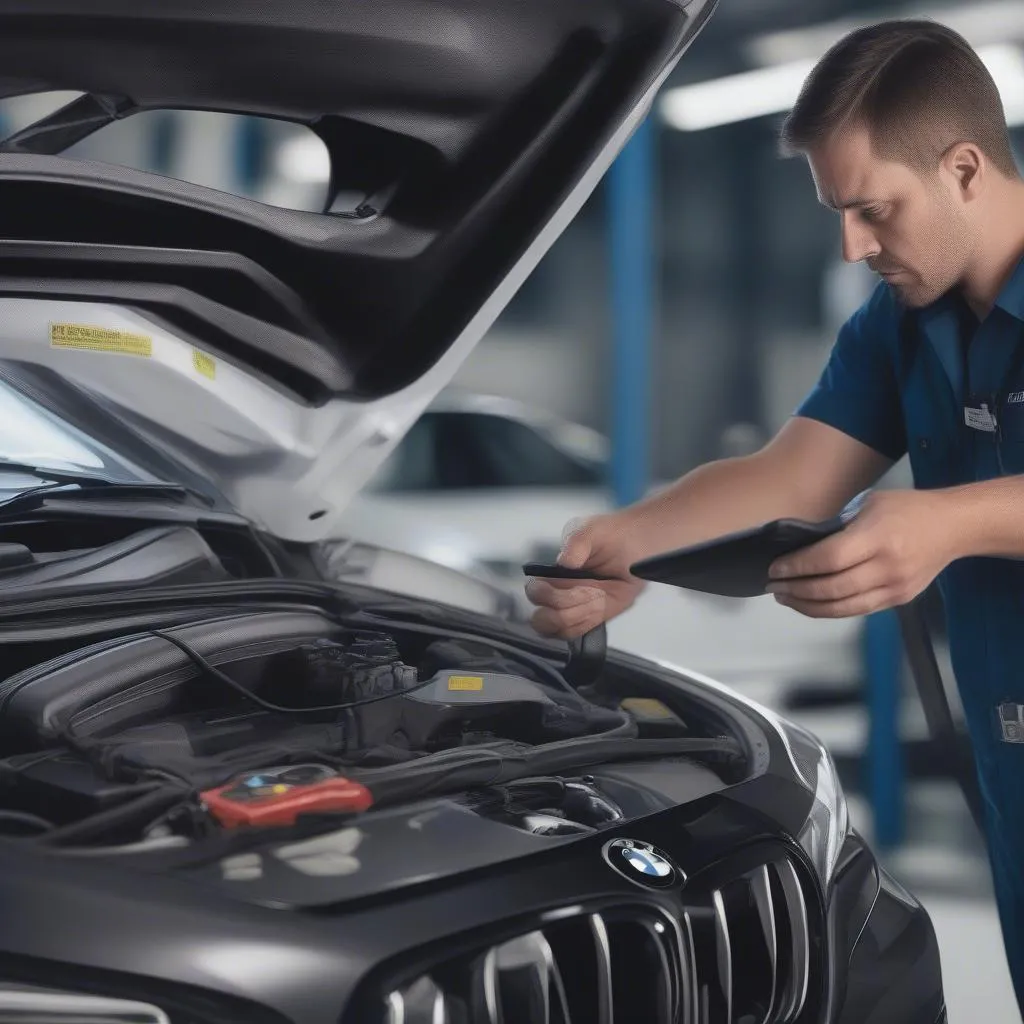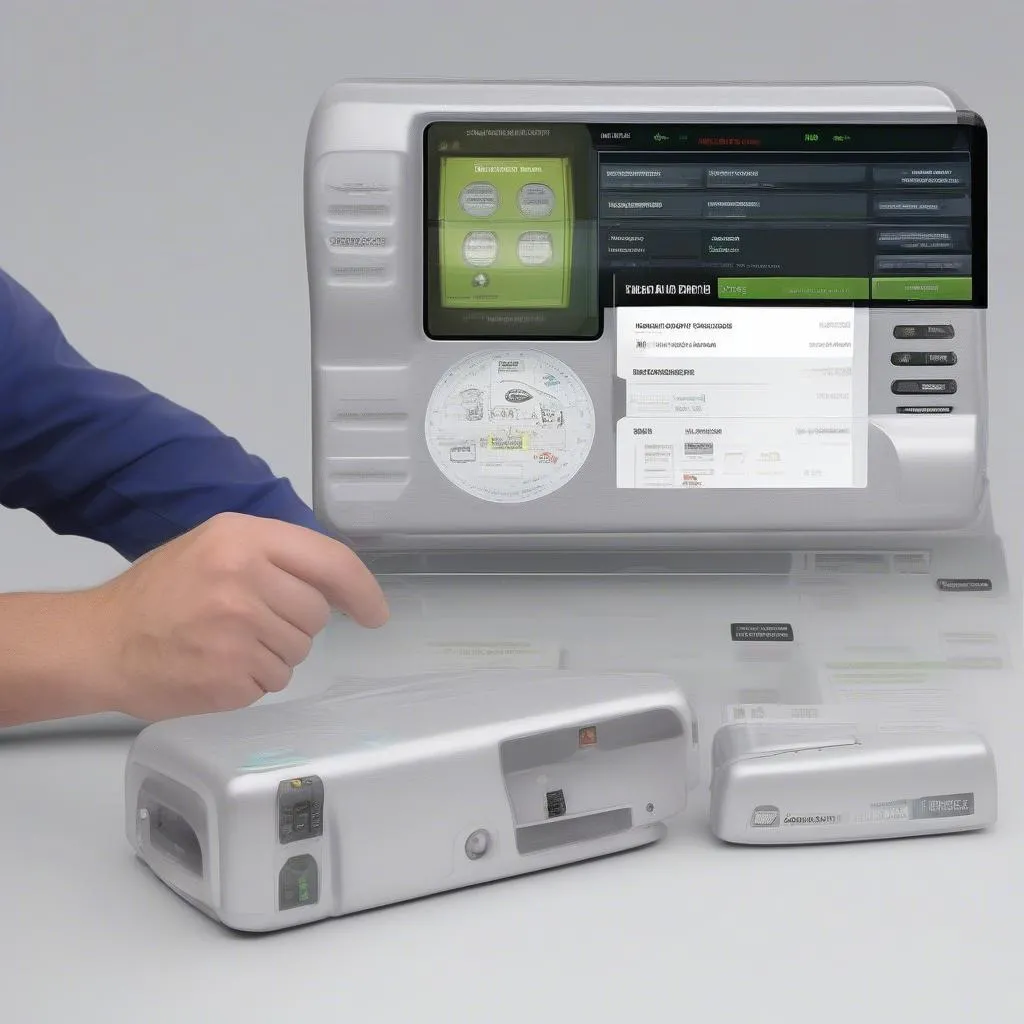Have you ever wondered how modern vehicles are diagnosed and repaired? It’s a complex process involving a sophisticated network of electronic systems that can be a challenge for even the most experienced mechanics. Enter the world of Dealer Scanners – specialized tools that provide a gateway into the intricate workings of your car’s electronics.
What Are Dealer Scanners?
Dealer scanners, also known as diagnostic tools, are essentially laptops or tablets equipped with specialized software that can communicate with a car’s onboard computer system. They allow technicians to read and interpret diagnostic trouble codes (DTCs), which are messages generated by the vehicle’s electronic control units (ECUs) when a malfunction is detected.
How Do Dealer Scanners Work?
These scanners connect to the car’s diagnostic port, typically located under the dashboard, and use a specific protocol (like OBD-II or J1939) to communicate with the vehicle’s ECUs. Once connected, the technician can access a wealth of information including:
- Diagnostic Trouble Codes (DTCs): These codes provide detailed information about the specific issues detected in the vehicle’s systems.
- Live Data Streams: This real-time data allows the technician to monitor the performance of various sensors and actuators within the car, giving them insights into the vehicle’s current operating conditions.
- Actuator Tests: Dealer scanners can also be used to test and activate various components in the vehicle, like solenoids, motors, and other actuators.
Why Are Dealer Scanners Crucial for European Cars?
European vehicles, known for their advanced technology, often have more complex electronic systems compared to their American counterparts. This complexity necessitates the use of specialized dealer scanners designed specifically for each brand. For instance, a BMW scanner won’t work on an Audi, and vice versa.
Importance of Using Dealer Scanners for European Cars
Using a dealer scanner specifically designed for European cars offers several key advantages:
- Accurate Diagnosis: The advanced software in these scanners is able to read and interpret DTCs specific to the European brand and model, ensuring an accurate diagnosis of the problem.
- Comprehensive Data Access: European car scanners provide access to a wide range of data, including advanced parameters that may not be accessible with generic scanners.
- Effective Repair: Understanding the specific issues through accurate diagnosis and access to comprehensive data allows technicians to identify the root cause of the problem and implement effective repairs.
Dealer Scanners for European Cars: A Case Study
Imagine a scenario where a BMW owner experiences a sudden loss of power while driving. A generic scanner might identify a faulty oxygen sensor, but a BMW-specific scanner would delve deeper to uncover that the issue stems from a malfunctioning electronic throttle control module. This difference in information can be crucial for making the right repairs and preventing future issues.
This is just one example of how a dealer scanner can provide much more detailed information than a generic scanner, leading to a more accurate diagnosis and efficient repair.  Dealer scanner diagnosing a BMW engine fault
Dealer scanner diagnosing a BMW engine fault
Common Questions About Dealer Scanners
What are the different types of Dealer Scanners?
There are two main types of dealer scanners:
- OEM (Original Equipment Manufacturer) Scanners: These scanners are developed by the vehicle manufacturers themselves, offering the most comprehensive access to the vehicle’s data and functionalities.
- Aftermarket Scanners: These scanners are developed by third-party companies and offer a more affordable alternative to OEM scanners. While they may not have the same level of functionality as OEM scanners, they can still be effective for diagnosing and repairing many common issues.
How do I choose the right Dealer Scanner for my European Car?
When selecting a dealer scanner, it’s crucial to consider your specific needs:
- Brand and Model: Ensure the scanner is compatible with your car’s make and model.
- Functionality: If you need comprehensive diagnostics and repair capabilities, an OEM scanner might be a better option. However, if you’re looking for a basic scanner for occasional troubleshooting, an aftermarket scanner may be sufficient.
- Price: OEM scanners tend to be more expensive than aftermarket scanners.
Conclusion:
Dealer scanners are essential tools for diagnosing and repairing modern European vehicles. Their ability to access specific data and functionalities is critical for accurate diagnosis and efficient repair. Whether you’re a professional mechanic or a DIY enthusiast, understanding the role of these scanners is crucial for maintaining and maximizing the performance of your European car.
If you need assistance with diagnostics or repairs, don’t hesitate to contact our team of experts at Tech Car USA. We offer 24/7 support and can guide you through the process of selecting the right dealer scanner and using it effectively.
While dealer scanners may seem complex, they are becoming increasingly user-friendly. There are many resources available online and in print that can help you learn how to use a dealer scanner effectively.  Dealer scanner interface
Dealer scanner interface